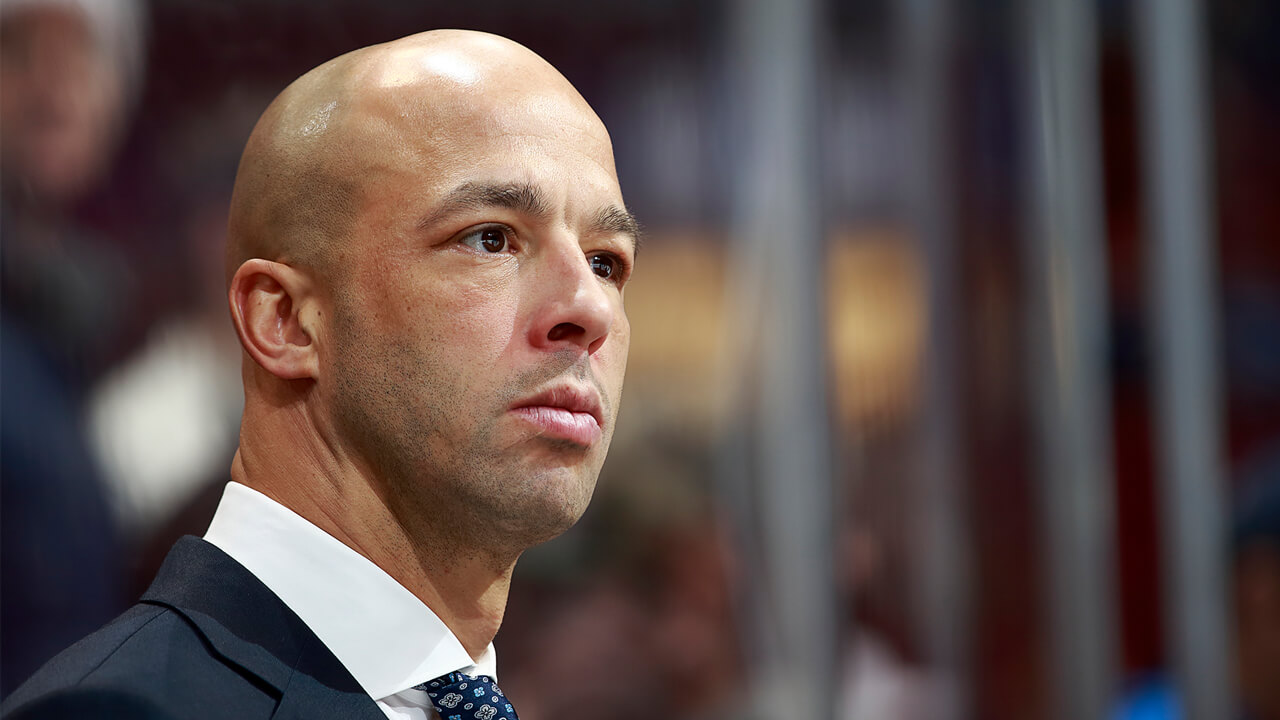Maple Leafs Hot Stove’s Ian Tulloch joined Sportsnet Tonight to break down the Toronto Maple Leafs’ badly struggling power play, the tactical changes that are needed, and Nick Foligno’s fit when he joins the lineup.
Ian on where it went so wrong on a power play that flew out of the gates this season:
In the last month, they are dead-last in the NHL in shooting percentage, so there is a bit of poor luck there, but more concerningly, if you look at shot rate, they are 20th in the NHL over the last month. That indicates they are not getting into the offensive zone enough. Arik Parnass’ research shows that the teams that score the most goals on the power play gain the zone with high efficiency and are able to set up in formation. Lately, the Leafs have struggled to get over the blue line and really set up.
Mitch Marner has been struggling to gain the zone, Auston Matthews — when he is in the lineup — is struggling to gain the zone at the rate you’d like to see on the power play. Even when they’re in the offensive zone, the puck movement is predictable — not enough motion. If you are a penalty killer on the opposing team trying to shut down the Leafs‘ power play, you clog up the neutral zone, and in the zone, you know what they want to do: They want to go east-west to Matthews, and if I load up on Matthews and take away that shot, are they going to threaten me in any other kind of major way? They haven’t been doing that.
They have their go-to play — everyone knows they want to get Matthews open for his wrist shot to go bar down like he has been his whole career — but when the play isn’t there, do you have a backup option or a third option to go to on the power play that can have success? They haven’t been doing it lately, but they should have the pieces to do it.
If you have a Marner or a Nylander down around the line working the goal line a little bit to thread some passes from behind the net, I think there are some things they can do to bring a different look to the power play.
Ian on how the blame gets apportioned between coaching staff and players:
This year, it is Manny Malhotra running it. Last year, it was Paul McFarland. The year before, it was Jim Hiller. It is kind of like an offensive coordinator changing every year and there is a new plan every year. With the power play, you would think you should just put your five best players on the ice, and eventually, the skilled players will make skill plays in tight spaces, beat the defense, and eventually score some goals.
There is a lot more that goes into a power play tactically than a lot of us realize. The best version of the Leafs‘ power play over the last decade was the Marner, JVR and Kadri unit they had back in the day, where Marner would start on the right wall, and he could go to the slap-pass to the middle. If that wasn’t there, he would work it down to JVR. They could converge for the rebound and four forwards would outnumber the other team down low. They haven’t been doing it as much — going for the slap pass to the bumper — because for a lot of this season, Joe Thornton has been in the bumper role, and he isn’t exactly a shot threat in the middle of the ice.
If they put Tavares in the bumper role, Marner on the right wall, Matthews on the left wall, and Rielly at the point, you are left with one more player to have there. The player you choose to run with at the net point is going to dictate the tactics that you are going to employ. If you are going to have a Wayne Simmonds there or a Zach Hyman there, it is a true net-front presence. It is a big body in front there for screens. If you have a Nylander there, or Marner there as a “net-front presence,” he likes to back off away from the crease towards the bottom of the goal line and work some east-west passes from there.
As much as I would just say, “Put more talent on the ice and let them figure it out,” I do think there is a more tactical approach to breaking down defenses where you have a number one option, a number two option, and a number-three option. Right now, the Leafs have their number-one option, but not a plan B or a plan C to really take advantage of opposing penalty kills when they overload on Matthews and commit to taking away the thing you want. The Leafs, tactically, need to prepare for that and make sure they have better options.
It is hugely important with how this roster is constructed. When you are top-loaded with elite talent, you expect them to produce on the power play. You think of Pittsburgh in years past, Washington, or Tampa. If you have that much talent on the ice, you should be able to work seam passes, more quick passes to the bumper — basically overload penalty kills with your options. It is something they really need to get fixed. If you are going to win a championship with this roster, you need a top-five power play. That is just the way their cap sheet is allocated.
In order to accomplish that, it is up to Manny Malhotra in these last 15 games of the season. He has to figure it out. If he doesn’t, I think his job could be on the line here.
Ian on Nick Foligno’s fit in the Leafs’ lineup:
I think he would work really well with a player like Tavares. He is more of a cycle-based, grind-it-out, win-pucks-below-the-goal line player. I think Foligno will fit in with that because he will force his way into those tight areas of the ice.
Justin Bourne wrote a great article about a month ago about how the Leafs, in the Columbus series last year, even though the heat map showed they were getting some scoring chances, they weren’t from in tight in the crease. In the playoffs, when the refs swallow their whistles when it comes to cross checks in front of the net, I think it is going to be really helpful to have a Nick Foligno forcing his way into that space.
Who is going to be the best player to take advantage of what Nick Foligno is doing offensively? We all know what he is going to do defensively — he is going to win puck battles, be strong on the forecheck, and play against the other team’s top players, which he has been doing his whole career. Offensively, I think there is another level Foligno can hit with his play on the cycle, and Toronto’s best cycle player, for me, is John Tavares.
Those two are a natural fit. I would imagine Nylander is going to be on their wing, but we’ll see what they do. Part of what makes Foligno such an interesting add to this Leafs team is that you can play him in a lot of different places — the Tavares line, with Matthews-Marner, or on a checking line that faces some of the other team’s top players. He is a very versatile piece.
A lot of us are reaidng the tea leaves here and we suspect it is going to be Foligno-Tavares-Nylander, and they’re really going to see if that can work. If it can, it’s a line you can give 18-20 minutes a night and trust them.

































